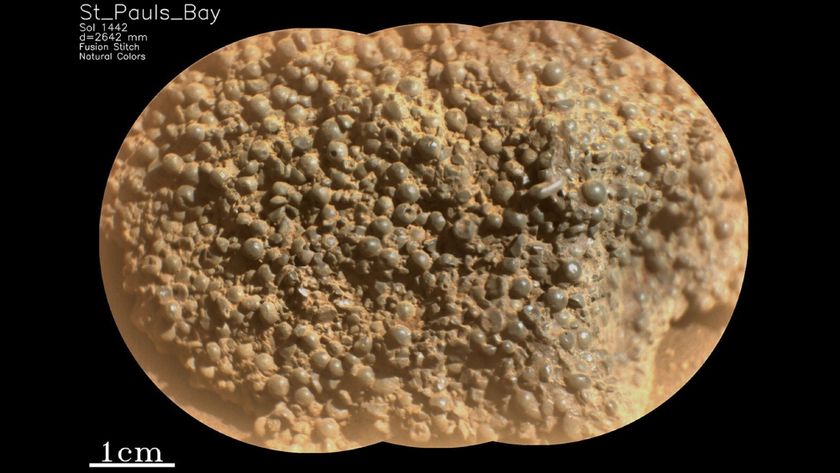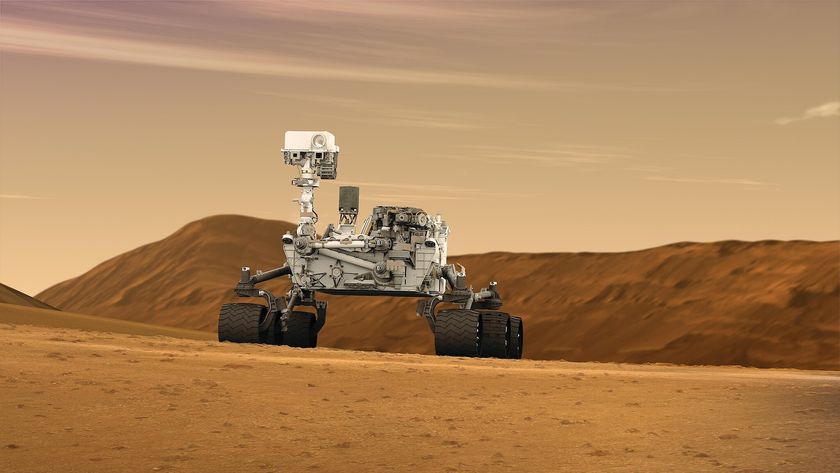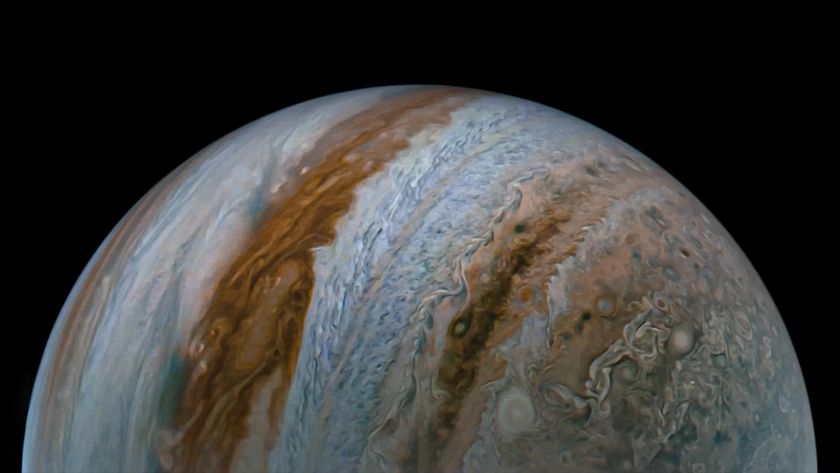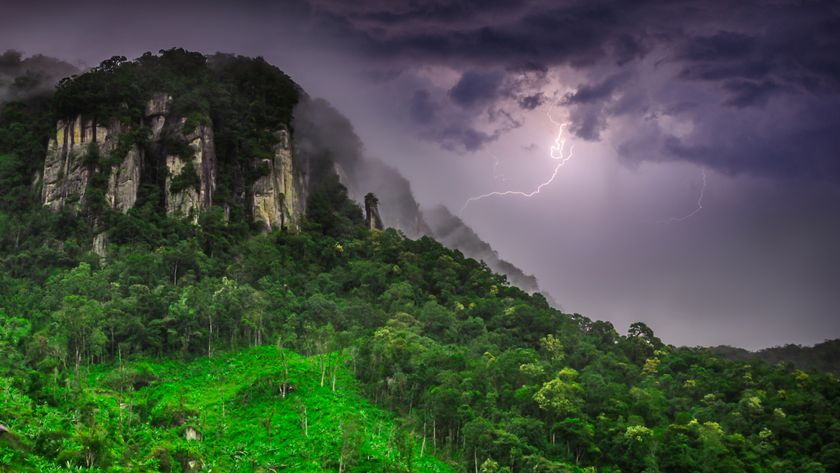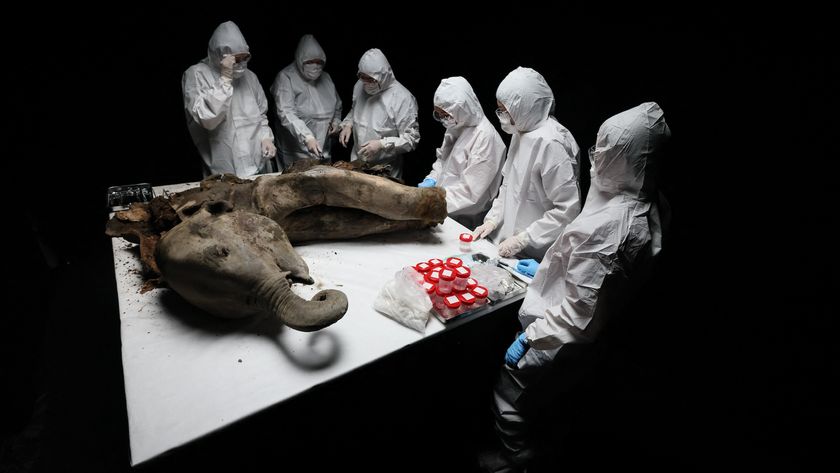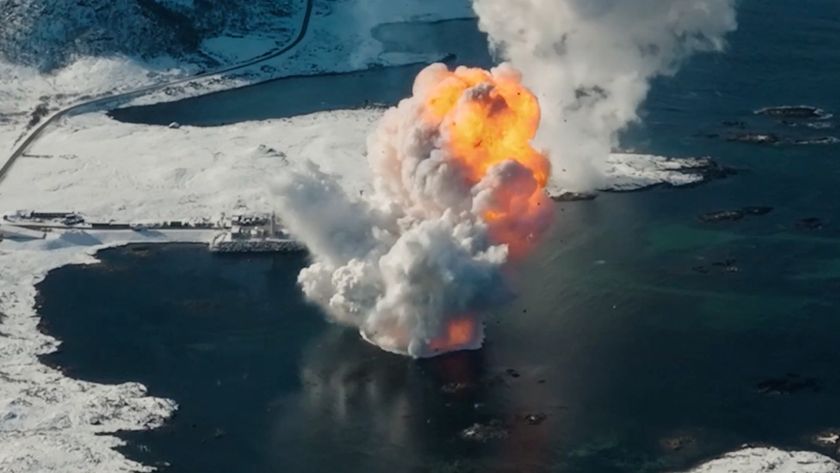What's up with this weird green rock on Mars? Perseverance rover is trying to find out.
Perseverance's laser hasn't yet penetrated the mystery of a strange Martian rock near the rover's new digs.
NASA's rover is waiting for its companion, the Ingenuity helicopter, to make the first-ever powered flight on another planet. Meanwhile, its instruments targeted a greenish-looking rock on the Red Planet's surface that has the science team "trading lots of hypotheses," according to the rover's Twitter feed — but please don't pick aliens as one of them.
"Is it something weathered out of the local bedrock?," a tweet the account posted on Wednesday (March 31) wondered. "Is it a piece of Mars plopped into the area from a far-flung impact event? Is it a meteorite? Or something else?"
Video: Perseverance lasers odd rock and new Mars panorama in latest pics
Related: Where to find the latest Mars photos from NASA's Perseverance rover
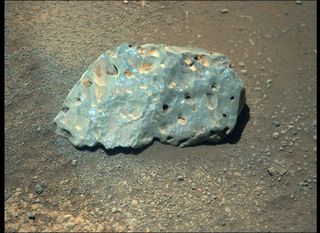
"It's about 6 inches (15 cm) long," added the tweet. "If you look closely, you might spot the row of laser marks where I zapped it to learn more."
The laser is part of the rock-zapping SuperCam instrument. Scientists hope that over time, the laser will give us more information about the strange rock's composition, which could tell scientists whether it formed in place or was transported there by some process. If it didn't form at its current location, water may have carried it to Jezero Crater or it could be a meteorite like the one that the Curiosity rover spotted in 2014.
Perseverance is the centerpiece of NASA's $2.7 billion Mars 2020 mission. The car-sized rover started its work on the Red Planet on Feb. 18, exploring Jezero Crater for signs of ancient life. The crater used to have a deep lake and a river delta, providing plenty of interesting environments for Perseverance to explore. The rover will then cache the most promising samples for a possible sample-return mission later in the decade.
Sign up for the Live Science daily newsletter now
Get the world’s most fascinating discoveries delivered straight to your inbox.
Perseverance has seven science instruments on board. SuperCam sits on top of the mast of Perseverance and can send laser shots to target rocks as far as 23 feet (7 meters) from the rover. Each laser beam creates a cloud of vaporized rock, the composition of which can be analyzed by SuperCam's cameras and spectrometers.
SuperCam's first activity on Mars was on March 2, when it fired on a target called Máaz, the Navajo word for Mars. The Perseverance team informally dubbed its region of Jezero the Canyon de Chelly, after a national monument on Navajo land in northeastern Arizona, and the Navajo Nation is working in consultation with NASA's Jet Propulsion Laboratory to select appropriate names to use on Mars.
Follow Elizabeth Howell on Twitter @howellspace. Follow us on Twitter @Spacedotcom and on Facebook.

Elizabeth Howell was staff reporter at Space.com between 2022 and 2024 and a regular contributor to Live Science and Space.com between 2012 and 2022. Elizabeth's reporting includes multiple exclusives with the White House, speaking several times with the International Space Station, witnessing five human spaceflight launches on two continents, flying parabolic, working inside a spacesuit, and participating in a simulated Mars mission. Her latest book, "Why Am I Taller?" (ECW Press, 2022) is co-written with astronaut Dave Williams.

